Support4nicuparents.org
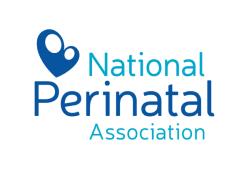
Who's Who in the NICU
Chaplain: A chaplain or person from the pastoral care department may be part of the NICU team; if not, one should always be available to families seeking spiritual support.
Charge Nurse: The nurse who is in charge and supervises the other nurses during a nursing shift. The charge nurse serves as a resource person and problem solver for both the nursing staff and NICU families.
Ethics Committee: Most hospitals have Ethics Committees that are available to both healthcare providers and to families, to help them resolve dilemmas regarding the ongoing provision of care in situations that are morally distressing or in which there is a disagreement between the staff and family about which course of care to pursue.
Intern: A physician who has graduated from medical school and is doing his or her first year of medical training ("internship").
Lactation Consultant: Usually a nurse or physician who has completed a special educational course in breastfeeding medicine; available to advise, support, and coach mothers on how to successfully provide breastmilk to and/or breastfeed their babies.
Medical/Pediatric Resident: A physician who has graduated from medical school and is undertaking training (completing a "residency") in Pediatrics.
Neonatal Fellow: A physician who has completed general training in Pediatrics and is now pursuing further specialization in the care of premature and sick newborns.
Neonatal Nurse Practitioner (NNP): A nurse who has received advanced training for several years beyond standard nursing training to enable her or him to specialize in the care of newborn and critically ill infants. NNPs work in teams with neonatologists.
Neonatologist: A pediatrician specializing in the care of sick and premature infants. The training for neonatologists is three years beyond the usual training for general pediatrics.
Support4NICUParents is a program of the National Perinatal Association
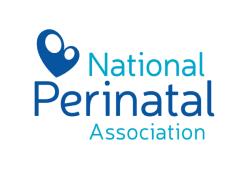
Nutritionist (or Dietician): A specialist in dietary needs of patients; may make recommendations to the NICU staff and parents about individualized dietary needs for specific babies.
Occupational therapist (OT): A therapist who specializes in developmental care and may provide oral feeding assistance to babies.
Ophthalmologist: Eye doctor; may provide screening exams in the NICU to evaluate babies for retinopathy of prematurity or other eye conditions.
Palliative Care Team: Some hospitals have palliative care teams that help both staff and families navigate the process of providing palliative care ("comfort care") to patients with life-limiting conditions.
Perinatologist: A physician specializing in High-Risk Obstetrics, having already completed general training in Obstetrics and Gynecology (OB-Gyn).
Pharmacist: A person who is professionally qualified to prepare and dispense medications prescribed by the medical team (physician or Neonatal Nurse Practitioner).
Physical Therapist (PT): A therapist trained to help patients improve muscle tone and mobility; they can help with other developmental concerns including providing oral feeding assistance to babies.
Psychologist: A psychologist may be a part of the NICU staff in some hospitals. Their role is to provide families with support and also to educate and support the staff.
Respiratory therapist (RT): A therapist who attends to the respiratory needs of the baby. Their responsibilities include managing the ventilator, CPAP, nasal cannula; monitoring oxygen saturation; suctioning the baby's airway; drawing blood gases, etc.
Social worker: A mental health professional who has had training in how to provide psychosocial support to families in need. Social workers may help with referral to community resources, and they may provide crisis intervention counseling and supportive therapy to parents and families.
Speech-Language Pathologist (SLP): A therapist who often works with babies who have feeding problems.
Support4NICUParents is a program of the National Perinatal Association
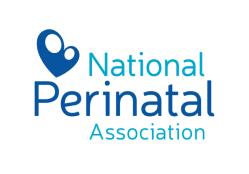
Glossary of NICU Terms
ABO incompatibility: A type of blood group incompatibility which may occur when mother is blood type O and baby is type A, B, or AB. This incompatibility may lead to break down of the baby's blood cells and sometimes to hyperbilirubinemia and anemia.
Abruption (Placental abruption): A complication of pregnancy in which the placenta separates from the wall of the uterus prior to delivery; a medical emergency.
Acidosis: A condition in which the body accumulates too much acid, either from a build-up of carbon dioxide related to breathing problems, or from dysfunction in other organ systems such as heart or kidneys.
Ad lib: Usually used in relationship to feedings; this means the baby can feed whenever she wants, and take as much as she wants. The baby is fed when hungry as opposed to being fed on a schedule.
Anemia: Low red blood cell count.
Anencephaly: A birth defect in which a part of the brain and skull do not develop, caused by failure of the embryonic neural tube.
Apgar score: Score given to babies at one and five minutes after birth on five different measures which indicates their need for resuscitation.
Apnea: Pause in breathing which may lead to drop in heart rate (bradycardia) or drop in oxygen saturation (desaturation).
Bilious residual: Greenish fluid in the stomach; indicates that the baby may have some blockage of the intestinal tract or is not digesting feedings. May be seen in feeding intolerance.
Blood gas: A blood test to determine the blood's acid-base status including pH and levels of carbon dioxide and oxygen. Usually performed on arterial blood.
Bradycardia: Low heart rate. Often occurs after apnea (pause in breathing).
Breech position: The baby's intrauterine position is characterized by the bottom or feet presenting first, instead of the head. Often leads to a Cesarean section delivery.
Bronchopulmonary dysplasia (BPD, also known as Chronic Lung Disease (CLD)): A lung disease found primarily in premature infants, many of whom have been on mechanical
Support4NICUParents is a program of the National Perinatal Association
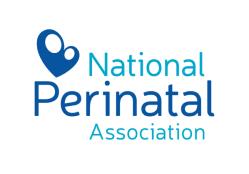
ventilators. BPD is characterized by scarring and inflammation of the lungs. Babies may need to go home on oxygen if they have BPD.
Cardioversion: A method to treat an abnormal heart rhythm by providing an electrical shock to the heart. Paddles are applied to the patient's chest, and an electrical current which is discharged through them travels to the heart to "reset" its pacemaker.
CCHD Screening (Critical Congenital Heart Disease Screening): A test performed on newborns at or beyond 48 hours of age to screen for the presence of critical (life-threatening) congenital heart lesions. The test is performed by comparing oxygen saturation on the right wrist to oxygen saturation of one of the feet. A positive (abnormal) screen would be followed up with an echocardiogram.
Coombs Test: A blood test to determine blood group incompatibility between mother and baby. A positive test means that mother has formed antibodies to baby's blood type, and these antibodies may attach to baby's red blood cells and cause them to break up (hemolyze).
Cerebral palsy (CP): A group of non-progressive disorders that primarily affect movement, balance and posture; results from damage to the part of the brain controlling muscle tone.
Chest tube: A tube placed in between the ribs into the pleural space, the space between the chest wall and the lung, to remove air that has leaked outside of the lung and is now compressing it.
Chronic Lung Disease (CLD): See Bronchopulmonary dysplasia.
Code Pink: A resuscitation procedure performed when a baby's heart rate is dangerously low or the baby is not breathing. Similar to a Code Blue in an adult patient.
Continuous Positive Airway Pressure (CPAP): A form of respiratory support in which positive pressure is applied to an infant's airways usually through flow of air or oxygen delivered via nasal prongs.
CPR: Cardiopulmonary Resuscitation. Emergency first aid procedure provided to patients with cardiac or respiratory arrest (cessation of heart function or cessation of breathing). It consists of chest compressions and assisted breathing in a rhythmic pattern.
Cranial ultrasound (head ultrasound): An ultrasound of the brain which is performed with a probe on the baby's anterior fontanel or "soft spot;" it is generally used to detect intracranial bleeding such as intraventricular hemorrhage.
C-reactive protein (CRP): A blood test which is a non-specific indicator of inflammation, used to evaluate babies for possible infection.
Creatinine: A blood test measuring kidney function.
Support4NICUParents is a program of the National Perinatal Association
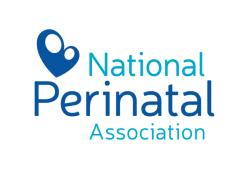
Cue-based feedings (also known as infant-driven feedings): The baby is evaluated for cues that demonstrate interest and readiness for oral feeding and fed only if enough cues are present.
Deep hypothermic circulatory arrest: A procedure utilized during open heart surgery to bring the heart to a stop by significantly cooling the patient's core temperature to a desired range.
Desaturation ("desat"): An oxygen level, usually determined by a pulse oximeter, which falls below standard ranges, usually less than 90%.
Dialysis: A procedure used in kidney failure to cleanse the patient's blood of waste products.
Donor human milk: Breast milk which is provided by donors and which is pasteurized and checked for its safety; available through a Milk Bank or a commercial company.
Down Syndrome (Trisomy 21): A genetic condition in which a person has three copies of the 21st chromosome, for a total of 47 chromosomes instead of the usual 46. People with Down syndrome have characteristic physical features as well as developmental disabilities.
DNR: Do Not Resuscitate. Orders written to direct that a patient not receive life-sustaining treatment in the case of a cardiac or respiratory arrest. Orders can be individualized for each patient.
Echocardiogram: An ultrasound test to evaluate both the structure and function of the heart.
Eclampsia: The condition of pre-eclampsia (pregnancy-induced hypertension) when it progresses to the point of causing seizures in the pregnant woman.
ECMO (Extracorporeal Membrane Oxygenation): A procedure similar to heart-lung bypass in which oxygen is added and carbon dioxide is removed from a baby's blood. It is used as a treatment primarily for babies who have severe lung disease, while their lungs recover.
Endotracheal tube: A tube that is placed into the trachea or windpipe to give positive pressure into the baby's lungs and assist the baby's breathing with a ventilator.
Exchange transfusion: Procedure usually performed to remove bilirubin from baby's blood stream when bilirubin is so high as to lead to kernicterus if not treated. The baby's blood is removed, a little at a time, and replaced with blood from a Blood Bank.
Extremely Low Birth Weight Baby (ELBW): A baby born with a birth weight less than 1,000 grams.
Extubate: Endotracheal tube is taken out of the trachea or windpipe.
Feeding intolerance: Term used to describe a baby who is not digesting food properly; may be evidenced by gastric residuals, spitting up, or abdominal distension.
Support4NICUParents is a program of the National Perinatal Association
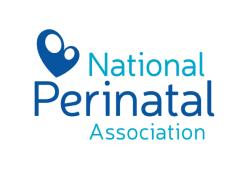
Gastric residuals: Fluid (milk and/or mucous) left in the stomach after a feeding; sometimes there is fluid in the stomach even without feedings.
Gastroesophageal reflux: When contents of the stomach come back up into the esophagus. When this causes irritation of the esophagus, it may need treatment.
Gastroschisis: A birth defect in which the intestines protrude (stick through) a whole in the right side of the abdominal wall.
Gastrostomy tube (G-tube): A feeding tube which is placed through the skin and stomach wall directly into the stomach.
Gavage tube: A feeding tube which is placed either through the nose or mouth and advanced into the stomach, used either to decompress the stomach or to provide feedings when a baby can't take feeds by mouth.
Gestational age: The age of the embryo, fetus or infant as calculated from the first day of the mother's last menstrual cycle; measured in weeks of pregnancy.
Gestational diabetes: Diabetes (high blood sugar) diagnosed during pregnancy; it may persist after pregnancy or only occur during pregnancy.
Hematocrit: A blood test measuring the proportion of red blood cells in whole blood.
Hemangioma: An abnormal overgrowth (non-cancerous tumor) of blood vessels, most frequently occurring in the skin but can be found in internal organs.
Hemoglobin: A blood test measure of red blood cells.
High Flow Nasal Cannula: A tubing with prongs that can be placed in the nose to allow delivery of heated, humidified air or oxygen.
High Frequency Oscillating Ventilator (HFOV): A special type of ventilator used to deliver a constant pressure to the baby's lungs through a process known as oscillation.
Home monitor (home apnea monitor): A small, portable machine which can be used in the home used to alert caregivers when a baby's heart rate or breathing are lower than normal.
Hydrocephalus: A condition in which fluid accumulates in the brain and may cause enlargement of the head and compression of brain tissue.
Hydrocortisone (cortisol): A steroid hormone released in response to stress; produced by the adrenal glands. Sometimes given as a medicine.
Support4NICUParents is a program of the National Perinatal Association
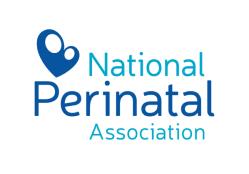
Hyperbilirubinemia: An elevated serum bilirubin, can be due to many causes, most commonly due to immaturity of the enzymes in the liver which process bilirubin. Hyperbilirubinemia may also be known as jaundice.
Hypoglycemia: Low blood sugar.
Hypoxic Ischemic Encephalopathy (HIE): A condition in which the fetus has been deprived of oxygen or blood flow, leading to brain injury. It may require treatment with total body hypothermia. It may lead to cerebral palsy or other neurodevelopmental problems.
Hypothermia: Low body temperature.
Ileostomy: A piece of the ileum, or small intestine, is surgically brought to an opening that is created on the abdominal wall. Stool will then leave the body through the ileostomy. This procedure is necessary for certain intestinal conditions such as necrotizing enterocolitis or intestinal obstruction.
Intubate: To place an endotracheal tube into the trachea or windpipe to aid breathing; baby is then connected to the ventilator.
Intrauterine growth retardation (IUGR): Term used to describe when a fetus' growth slows during pregnancy, and/or when the baby is at less than the 10th percentile on growth curves.
Intraventricular hemorrhage (IVH): Bleeding into the brain, often into or near the ventricular system where spinal fluid is produced.
Isolette (Incubator): A temperature-controlled environment for an infant.
Jaundice: Yellow-orange color of skin resulting from hyperbilirubinemia of any cause.
Kangaroo care: Skin-to-skin contact between a parent and infant (usually a premature infant); promotes bonding, temperature control, and growth.
Kernicterus: A form of brain damage in newborns, caused by severe hyperbilirubinemia (jaundice); can have many different causes.
Laparotomy: A surgical procedure in which the abdominal cavity is opened for exploration or further surgery.
Late Preterm Infant: A baby born between 34 0/7 weeks and 36 /7 weeks gestational age.
Mechanical ventilator (ventilator): A machine used to provide assistance for breathing. Most often a baby is connected to a ventilator via an endotracheal tube, but the ventilator can be used "non-invasively" through a special type of nasal cannula.
Support4NICUParents is a program of the National Perinatal Association
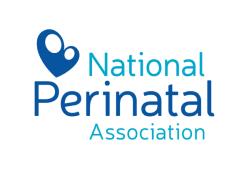
Meconium: The first stool passed by a newborn; it is dark green and sticky. It may be passed in utero, before birth.
Meconium aspiration syndrome: A respiratory condition in which a fetus inhales meconium before or at the time of birth. Meconium is very irritating to the lungs and causes a form of pneumonia.
Microcephaly: Head circumference less than the 10th percentile for the baby's gestational age.
Micropreemie: A baby born at or under 800-1,000 grams and/or 26 weeks gestation.
Mosaic (referring to chromosomes): A person has some cells with abnormal genetic or chromosomal makeup and some cells that are normal.
NPO: Abbreviation for a Latin term meaning "nothing by mouth."
Nasal cannula: Tubing which fits into the nares and delivers a flow of air or oxygen.
Nasal intermittent positive pressure ventilation (NIPPV): A non-invasive form of ventilation often used after a baby is extubated; it provides intermittent breaths at a rate set by the respiratory therapy team.
Necrotizing enterocolitis (NEC): A gastrointestinal disease usually affecting premature infants; intestinal tissue becomes inflamed and possibly infected, and may become necrotic (non-viable).
Neonatal Abstinence Syndrome (NAS): A collection of symptoms resulting from withdrawal after exposure to opiate medications, whether ingested by mother during pregnancy or used to treat the baby during his hospital course (example: certain pain medications such as morphine). Nurses score babies symptoms and when the score reaches a certain level, treatment is initiated to make the baby more comfortable during the withdrawal process.
NICU (Neonatal Intensive Care Unit): A specially designated unit in a hospital for the care of premature or sick infants.
Omphalocele: A birth defect in the abdominal wall which the causes baby's intestines, liver and sometimes other abdominal organs to be outside the abdomen, usually in a sac.
Oxygen saturation: A measure of how much oxygen the blood is carrying; usually measured with a small probe around a baby's hand or foot called a pulse oximeter.
Palliative care ("comfort care"): Care to improve the quality of life, but not produce a cure, for a patient with a serious or fatal illness or life-limiting condition.
Patent Ductus Arteriosus (PDA): The ductus arteriosus is a blood vessel which connects the pulmonary artery with the aorta in the fetus; it closes in the first few hours to days to weeks in
Support4NICUParents is a program of the National Perinatal Association
babies, depending on their gestational age. When it remains open, it is called "patent." If it doesn't close on its own, it may require medical or surgical treatment.
PDA Ligation: Surgery to close a PDA, when medical treatment has failed and the PDA is causing problems for the baby.
Pericardial effusion: Fluid that has collected around the outside of the heart, inside the lining of the membrane that surrounds the heart (pericardium).
Periodic breathing: A rhythmic breathing pattern common in premature infants, characterized by very brief pauses between a series of breaths. It may lead to mild oxygen desaturation.
Periventricular leukomalacia (PVL): Cystic changes in the white matter near the ventricles in the brain; a condition which can lead to cerebral palsy.
Persistent pulmonary hypertension of the newborn (PPHN): Persistence of the fetal pattern of circulation, in which most of the blood being ejected from the right ventricle flows through the ductus arteriosus, bypassing the lungs (leading to poor oxygenation), and into the descending aorta.
Phototherapy: A type of light treatment used to treat hyperbilirubinemia. Can be an overhead light or in the form of a blanket on which baby sleeps.
PICC Line (Peripherally inserted central catheter): A very thin, flexible IV which is placed into a peripheral vein such as in the arm or leg and advanced into a large blood vessel near the heart, usually the superior vena cava. Advantages include that it can stay in place for as long as a month and that it can deliver higher concentrations of nutrients than a regular IV can.
Placenta previa: A condition in which the placenta overlies the opening (os) of the cervix. May cause bleeding during pregnancy, and the condition prohibits vaginal delivery.
Platelets: The elements of blood which allow clotting to occur.
Pleural effusion: Fluid that has collected around the outside of the lung, inside the lining of the membrane which surrounds the lung (pleura).
Pneumothorax: This is a collapsed lung. It can occur spontaneously shortly after delivery, in which case it usually resolves on its own, or it can occur in relationship to respiratory distress syndrome and the use of respiratory support modalities such as CPAP or a ventilator. In these cases, a chest tube may need to be placed to removed the air that has leaked out of the lung and is now surrounding and compressing the lung.
Pre-eclampsia (also known as pregnancy-induced hypertension or toxemia): A disorder of pregnancy causing hypertension in the pregnant mother; may also cause swelling, excessive
Support4NICUParents is a program of the National Perinatal Association
weight gain, and a large amount of protein in the urine. May produce blurry vision, headaches, and right upper quadrant pain.
Preterm infant (Premature infant, "Preemie"): Any baby born before 37 completed weeks of gestational age.
Post-hemorrhagic hydrocephalus: An abnormal build-up of cerebrospinal fluid in the ventricles of the brain, resulting from an intraventricular hemorrhage.
Postpartum depression: A form of clinical depression occurring in a woman within weeks to a year after she gives birth.
Pulmonary interstitial emphysema (PIE): A form of "air leak" in which the small air sacs (alveoli) in the lung rupture, and air tracks into the lung tissue between the alveoli.
Pulse oximeter: A non-invasive way to measure oxygen saturation.
RAM Cannula: A specially designed nasal cannula to deliver high flows of humidified air or oxygen, or to deliver CPAP.
Respiratory distress syndrome (RDS): The most common lung condition of premature infants, caused by inadequate surfactant. The alveoli are therefore unable to normally inflate. It can be treated by giving the baby surfactant, and is often managed with the help of a ventilator, CPAP, of high flow nasal cannula. RDS is also known as Hyaline Membrane Disease (HMD).
Respiratory syncytial virus (RSV): A virus common in children under five years old which causes a respiratory tract infection manifested as a wheezing-type illness (bronchiolitis); it is often more serious in former premature infants or those with chronic lung or heart problems.
Retcam: A retinal imaging system used to perform eye examinations on babies; images are recorded and can be transmitted to an ophthalmologist for review.
Retinopathy of prematurity (ROP): An eye disease affecting premature infants in which the blood vessels in the retina do not develop normally. It can lead to blindness from retinal detachment but is usually treatable in earlier stages with laser surgery.
Rh Incompatibility: A type of blood group incompatibility in which mother has Rh-negative blood type and the baby in her womb has Rh-positive blood type. This incompatibility leads to break down of the fetus' blood cells and subsequently to hyperbilirubinemia and anemia in the baby.
Sepsis: A bloodstream infection that spreads throughout the body and may cause symptoms such as fever or hypothermia and low blood pressure.
Support4NICUParents is a program of the National Perinatal Association
Small for gestational age (SGA): Baby whose birthweight is less than the 10th percentile for gestational age.
Spontaneous intestinal perforation: When a hole develops spontaneously in the small intestine, a condition that most frequently occurs in very low birth weight babies. Treatment may include placement of a drain into the abdomen, or surgery and creation of an ileostomy.
Sudden Infant Death Syndrome (SIDS): Sudden and unexpected death of an infant less than one year old in which an autopsy fails to show a cause of death.
Supraventricular tachycardia (SVT): An abnormally fast heart rhythm originating in the upper chamber (atrium) of the heart.
Surfactant (Pulmonary surfactant): A substance produced by the lungs to enable the alveoli (individual air sacs) to expand by lowering their surface tension.
Synagis® (Palivizumab): A monoclonal antibody against respiratory syncytial virus; given monthly during the RSV season by intramuscular injection to babies at risk to prevent them from acquiring this infection.
Tachypnea: Abnormally high breathing rate, usually above 60 breaths per minute.
Tachycardia: Abnormally high heart rate, usually above 160 beats per minute.
Total Body Hypothermia (Total Body Cooling): A procedure in which a baby who has suffered hypoxic-ischemic encephalopathy (HIE) is placed on a cooling blanket and her core temperature is lowered to a range where brain metabolism slows. The baby undergoes cooling for 72 hours, after which she is rewarmed. This procedure has been shown to significantly reduce the risk of brain damage and therefore long-term neurodevelopmental problems in babies with HIE.
Toxemia: See pre-eclampsia.
TPN (total parenteral nutrition): An intravenous nutritional preparation containing protein, sugar, fat, vitamins and minerals. TPN is mixed daily to specifications according to the patient's nutritional needs, and is given when the patient can't eat or can't get enough calories through a normal diet.
Transient Tachypnea of the Newborn (TTNB): A lung condition in which the fluid normally present in the lungs before birth is not cleared by the body rapidly enough, resulting in rapid breathing and sometimes a need for oxygen supplementation. Seen most often in babies who are delivered by Cesarean section.
Trisomy 18 (also called Edward syndrome): ): A genetic condition in which a person has three copies of the 18th chromosome, for a total of 47 chromosomes instead of the usual 46. People
Support4NICUParents is a program of the National Perinatal Association
with Trisomy 18 have characteristic physical features as well as severe developmental disabilities; they frequently do not survive past one year of age.
Trisomy 21: See Down syndrome.
Twin-to-twin transfusion syndrome: A complication of pregnancy in which one twin transfers blood to another through abnormal blood vessel connections in a shared placenta.
Umbilical artery catheter (UAC): A catheter which is placed into the baby's umbilical artery and advanced into the aorta; this enables continuous monitoring of blood pressure and enables drawing of blood tests without having to "stick" the baby.
Umbilical venous catheter (UVC): A catheter which is placed into the baby's umbilical vein and advanced into the superior vena cava; this enables infusion of intravenous fluids.
Vapotherm®: A specific type of high flow nasal cannula.
Vasa previa: A complication of pregnancy in which the fetal blood vessels are within the fetal membranes instead of within the umbilical cord; they can also grow across the cervix and can rupture, causing hemorrhage, during labor.
Ventilator: A machine used to inflate the lungs and assist the patient's breathing.
Ventricular fibrillation: A life-threatening abnormality in heart rhythm resulting from disorganized electrical impulses; the heart's contractions are not coordinated, and cardiac output falls leading to inadequate circulation.
Ventricular septal defect (VSD): A congenital abnormality of the heart in which there is an opening between the two lower chambers of the heart, the ventricles.
Ventriculoperitoneal shunt (VP shunt): A surgical procedure to relieve hydrocephalus; involves placing a catheter in the ventricle of the brain to drain cerebrospinal fluid into the peritoneal (abdominal) cavity, thereby relieving excessive pressure in the brain.
Very Low Birth Weight Baby (VLBW): A baby born weighing less than 1,500 grams.
White blood cells: The cells which respond to fight off infections; the white blood cell count is high when there is an infection.
Medications Used in the NICU:
Actigall: A medication used to treat cholestatic jaundice.
Acyclovir: An anti-viral medication usually used to treat herpes infections; it does not cure the infection, however.
Support4NICUParents is a program of the National Perinatal Association
Ampicillin: An antibiotic used to treat infections.
Ativan: A medication used for sedation.
Caffeine: A medication used to treat apnea of prematurity.
Dexamethasone: A steroid, may be used to treat lung disease and help babies get off the ventilator.
Digoxin: A common medication used to slow an abnormally fast heart rate. It is also used to treat congestive heart failure.
Epinephrine ("Epi"): A naturally occurring hormone which is given as a medication to increase heart rate and raise blood pressure. It is a drug commonly used during a Code Blue or Code Pink resuscitation procedure.
Fentanyl: A medication used for sedation and pain control.
Fluconazole: An anti-fungal medication used to prevent or treat fungal infections.
Gentamicin: An antibiotic used to treat infections.
Ibuprofen: A medication used to treat (close) the PDA.
Indomethacin: A medication used to treat (close) the PDA.
Keppra: A medication used to control seizures.
Lasix: A diuretic, used to help the body get rid of excess fluid in lung disease, in heart disease, and after transfusions.
Lidocaine: A medication used to treat abnormal heart rhythms.
Morphine: Used for sedation and pain control, and often used to treat Neonatal Abstinence Syndrome.
Phenobarbital: A medication used to control seizures.
Vancomycin: An antibiotic used to treat infections, particularly those with Staphylococcus.
Support4NICUParents is a program of the National Perinatal Association
Source: http://support4nicuparents.org/wp-content/uploads/2016/02/Glossary-of-NICU-Terms-for-Parents.pdf
Appropriate timing of fluoxetine and statin delivery reduces the risk of secondary bleeding in ischemic stroke rats
JOURNAL OF NEUROLOGY AND NEUROSCIENCE Maria HH Balch, Appropriate Timing of Fluoxetine and Statin Moner A Ragas, Danny Delivery Reduces the Risk of Secondary Wright,Amber Hensley, Bleeding in Ischemic Stroke Rats Kenny Reynolds, Bryce Kerr and Adrian M Corbett Department of Neuroscience, Cell
animalhealthreview.co.nz
Maori Health Making Education Easy Issue 2 – 2007 Tena koutou katoa Nau mai ki te putanga tuarua o te Tirohanga Rangahau Hauora Mäori. He Tuhituhi hirahira e paa ana ki nga kaupapa rangahau me nga take o naianei, mo ia marama. Kei te tino hari koa maatou ki nga whakautu mo te putanga tuatahi. A kei te maioha hoki ki o koutou uru pare. Te tumanako ka kitea i a koutou